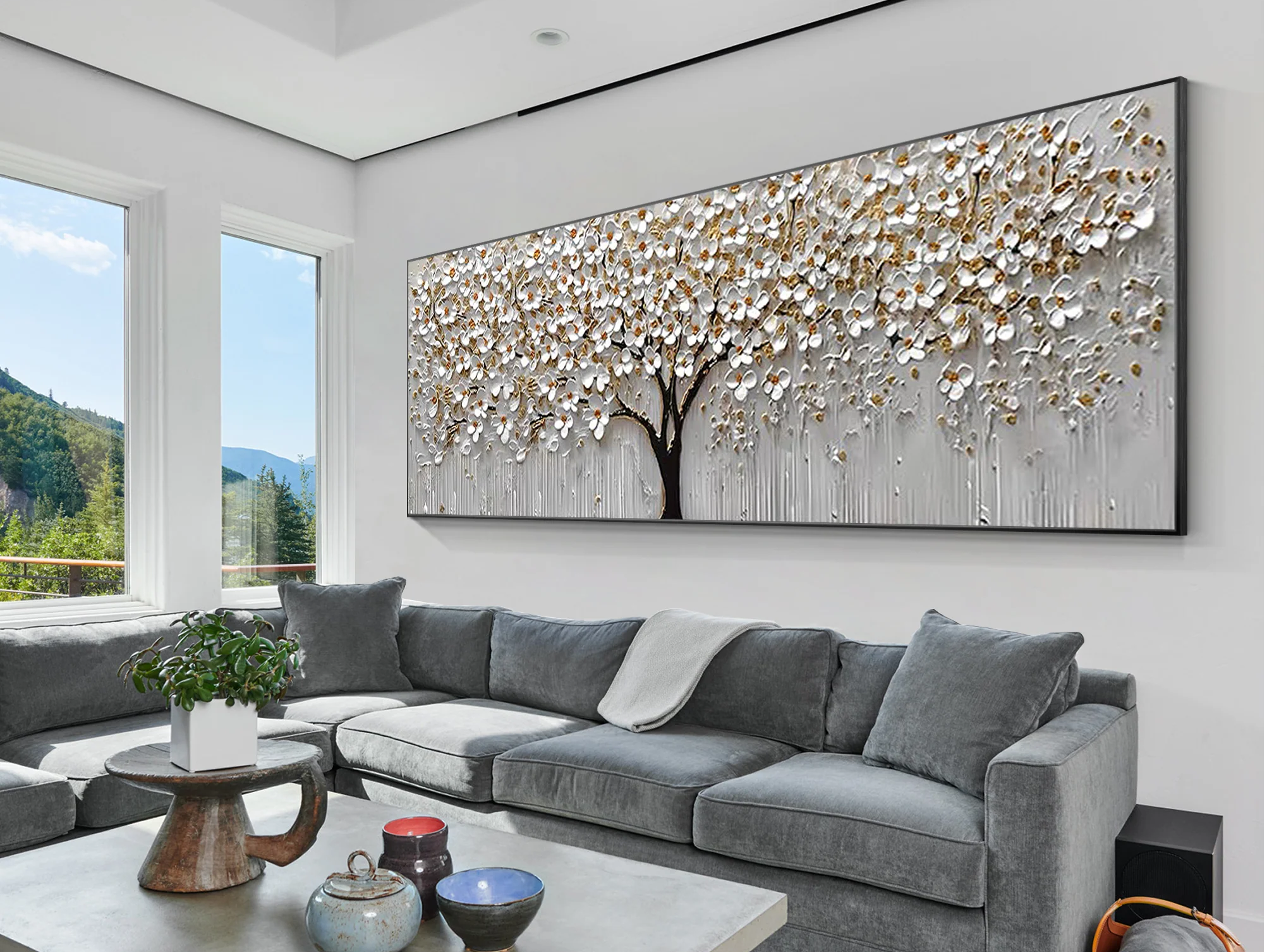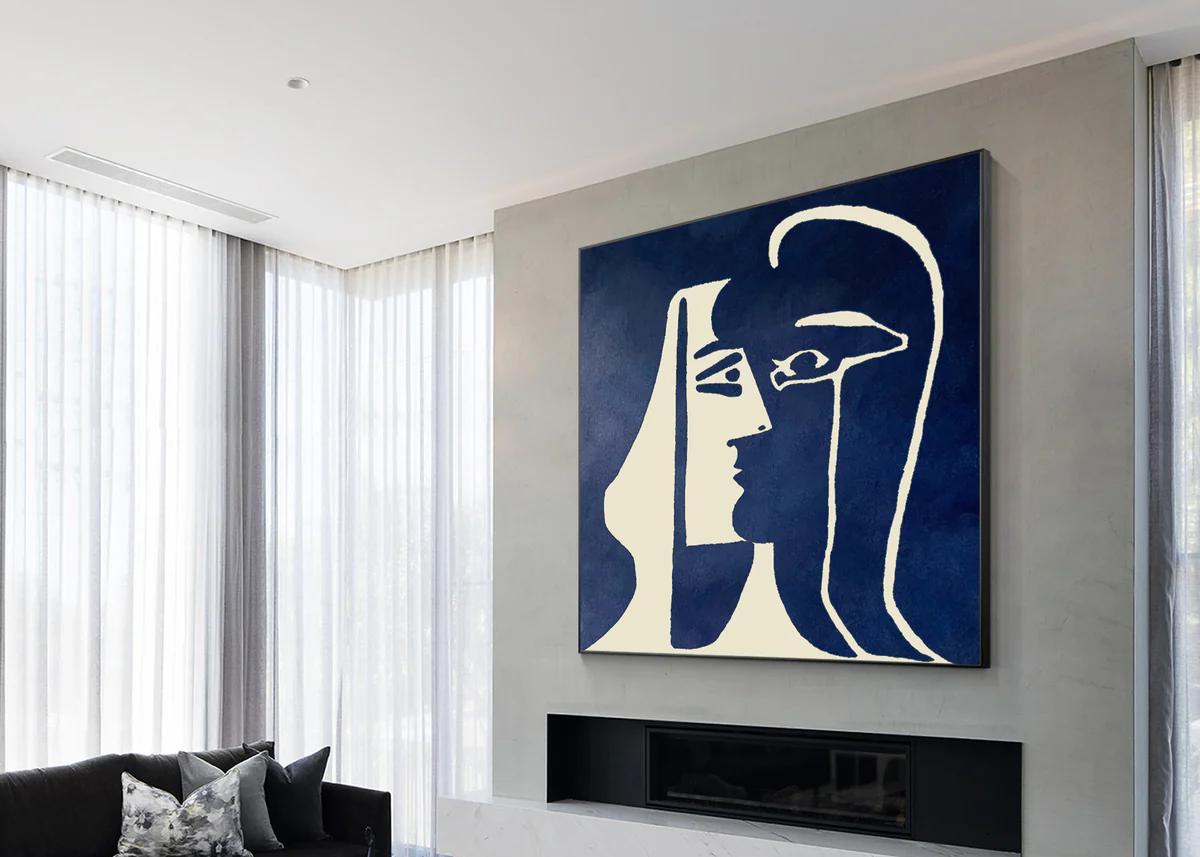
جمال الوابي سابي في الفن والتصميم
في عالم يحتفل غالبًا بالكمال والتصميم الخالي من العيوب، تقدم لنا فلسفة Wabi-Sabi اليابانية منظورًا منعشًا. فهي تعلمنا أن نجد الجمال في كل ما هو غير كامل، وعابر، وطبيعي. لا تعد فلسفة Wabi-Sabi مجرد اتجاه تصميمي، بل هي فلسفة تشجع على اليقظة والتقدير للأشياء البسيطة والأصيلة في الحياة.
في هذا المنشور، سنستكشف ما هو الوابي سابي، ومبادئه الأساسية، وكيف يمكن تطبيقه على الفن والديكور المنزلي والحياة اليومية.
ما هو Wabi-Sabi؟
Wabi-sabi هو مفهوم ياباني تقليدي يحتضن جمال عدم الكمال. وهو متجذر في فهم أن لا شيء في الحياة دائم أو كامل أو مثالي. وبدلاً من ذلك، يشجع على تقدير الدورات الطبيعية للحياة - النمو والشيخوخة والتحلل - ويجد الجمال في بساطة اللحظات اليومية.
تشير كلمة wabi إلى البساطة الريفية أو الأناقة البسيطة، بينما تشير كلمة sabi إلى الجمال الذي يأتي مع تقدم العمر ومرور الوقت. وعند الجمع بينهما، يمثل wabi-sabi الانسجام بين النقص والهدوء والأصالة.
المبادئ الأساسية لـ Wabi-Sabi
-
احتضان النقص
إن أحد أهم جوانب مفهوم الوابي سابي هو احتضانه للعيوب. سواء كان ذلك وعاءً فخاريًا متشققًا أو لوحة غير مستوية قليلاً، فإن مفهوم الوابي سابي يحتفي بالعيوب كجزء من قصة الشيء وشخصيته. فالعيوب تضيف عمقًا وتفردًا للأشياء، وتذكرنا بأن الحياة نفسها ليست كاملة. -
جمال البساطة
تشجعنا فلسفة Wabi-sabi على التخلي عن الإفراط واحتضان البساطة. وفي التصميم، قد يعني هذا اختيار الخطوط النظيفة والمساحات غير المزدحمة والمواد الطبيعية. ومن خلال التخلص من الأشياء غير الضرورية، يمكننا خلق بيئة سلمية ومتناغمة تعزز الوعي والتقدير. -
تقدير مرور الوقت
إن مفهوم "مونو نو أواري" ـ الوعي بعدم ثبات الأشياء ـ يشكل جوهر فلسفة "وابي سابي". وتشير هذه الفكرة إلى أن كل شيء في الحياة عابر، وأن الجمال الحقيقي يمكن أن نجده في كل ما يتلاشى أو يتقدم في العمر أو يتحلل. فالسطح المعدني الصدئ، أو الخشب المتآكل، أو الصورة الباهتة بفعل الشمس، كلها تحمل جمال اللمسة اللطيفة التي تحملها لنا الأيام. -
المواد والقوام الطبيعي
ترتبط فنون الوابي سابي ارتباطًا وثيقًا بالطبيعة، وغالبًا ما تحتفي بالمواد الخام العضوية مثل الخشب والحجر والطين. تحكي هذه المواد قصة من خلال نسيجها وعيوبها، وتسمح لنا بالتواصل مع العالم الطبيعي. إن استخدام القوام الطبيعي - مثل حبيبات الخشب، أو خشونة الحجر، أو التزجيج غير المتساوي للفخار - يضيف ثراءً وأصالة إلى أي شيء أو مساحة. -
عدم التماثل وعدم الانتظام
على عكس التقاليد الغربية، التي تؤكد غالبًا على التناسق والتوازن، يحتفل الوابي سابي بعدم التناسق. نادرًا ما تكون الطبيعة نفسها متناسقة، ويحتضن الوابي سابي الأشكال العضوية والاختلالات التي تحدث في العالم الطبيعي. إن المزهرية ذات الفتحة غير المركزية قليلاً أو اللوحة ذات ضربات الفرشاة غير المكتملة تجسد جوهر جمال الوابي سابي.
Wabi-Sabi في الفن والتصميم الداخلي
1. الوابي سابي في الفن
في الفن، يمكن رؤية مبدأ الوابي سابي في الأعمال التي تحتفي بالعيوب والملمس ومرور الوقت. على سبيل المثال، يمكن للفن التجريدي أن يجسد مبادئ الوابي سابي من خلال تسليط الضوء على الجمال الخام لضربات الفرشاة أو قطرات الطلاء أو الأسطح المزخرفة. قد يستخدم الفنانون مواد قديمة أو يضيفون عيوبًا مرئية عمدًا لاستحضار شعور بالخلود والأصالة.
2. Wabi-Sabi في ديكور المنزل
عندما يتعلق الأمر بديكور المنزل، تشجع طريقة wabi-sabi استخدام العناصر البسيطة والطبيعية - الأثاث الخشبي غير المصقول، والفخار المصنوع يدويًا، والأشياء العتيقة أو القديمة. قد تظهر على هذه العناصر علامات التآكل والتلف، ولكن بدلاً من التقليل من جمالها، فإن هذه العيوب تعزز سحرها. والهدف هو خلق بيئة هادئة وغير مزدحمة تدعو إلى الاسترخاء واليقظة.
- المواد الطبيعية: فكر في الأثاث الخشبي ذو أنماط الحبوب المرئية، أو الأطباق الخزفية ذات الطلاء الفريد، أو المنسوجات المصنوعة يدويًا.
- الألوان الصامتة: تميل مساحات Wabi-Sabi إلى استخدام الألوان الترابية الصامتة - البني الناعم، والرمادي، والأخضر - والتي تخلق جوًا هادئًا.
- تصميم بسيط وعملي: كل شيء في غرفة wabi-sabi له غرض. يتم التركيز على الجمال العملي والوظيفي، بدلاً من الزخرفة لمجرد الزخرفة.
3. Wabi-Sabi والبساطة
في حين أن البساطة والوابي سابي غالبًا ما يرتبطان، إلا أن الفلسفتين مختلفتان. تركز البساطة على التخلص من الأشياء غير الضرورية لتحقيق البساطة والوضوح، بينما تؤكد الوابي سابي على جمال النقص والشيخوخة. تتميز الوابي سابي بصفات أكثر عضوية وعاطفية، مما يضيف العمق والدفء إلى المساحات البسيطة.
كيفية دمج مبدأ Wabi-Sabi في حياتك
- تزيين باستخدام العناصر القديمة أو المصنوعة يدويًا: ابحث عن القطع التي تحكي قصة - الأثاث العتيق، أو الفخار المصنوع يدويًا، أو الفن بضربات فرشاة مرئية.
- تقبل العيوب: لا تخجل من الأشياء التي بها عيوب. يمكن لكوب مكسور أو كرسي خشبي مهترئ أو قطعة فنية بها ضربات فرشاة مرئية أن تضيف طابعًا ودفءًا إلى مساحتك.
- خلق بيئة هادئة: حافظ على مساحاتك بسيطة وغير مزدحمة. اختر ألوانًا مهدئة ومواد طبيعية وأشياء ذات معنى تعزز الاسترخاء واليقظة.
- استمتع بالعملية: سواء كنت تقوم بإنشاء عمل فني أو تزيين منزلك، استمتع بالرحلة واحتضن اللحظات غير الكاملة على طول الطريق.
الأفكار النهائية
تعلمنا فلسفة الوابي سابي أن نجد الجمال في الأشياء العابرة والمستهلكة وغير الكاملة. وفي عالم يقدّر الكمال غالبًا، فإن تبني فلسفة الوابي سابي يسمح لنا بتنمية تقديرنا لإيقاعات الحياة الطبيعية والجمال الذي يأتي مع الوقت. سواء في الفن أو ديكور المنزل أو الحياة اليومية، تشجعنا فلسفة الوابي سابي على التباطؤ والتأمل وإيجاد المعنى في الأشياء البسيطة والأصيلة من حولنا.
إذا كنت منجذبًا إلى جماليات الوابي سابي، ففكر في كيفية دمج مبادئها في مساحتك. ابدأ بتقبل العيوب وإضافة مواد طبيعية وإنشاء مساحة تشعرك بالهدوء والأصالة. تذكر أن الكمال ليس الهدف - بل الأصالة والهدوء.






















اترك تعليقًا
This site is protected by hCaptcha and the hCaptcha Privacy Policy and Terms of Service apply.